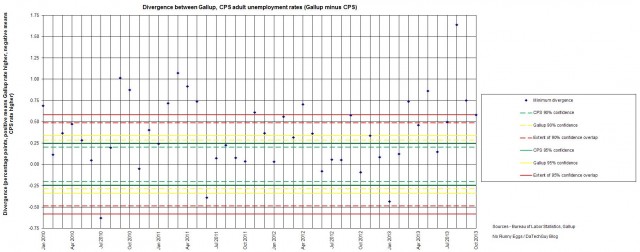Ed. – Do excuse the dust. It’s been too long since I opened things up here.
So Sen. Bernie Sanders (I-VT) and a bunch of his fellow Democrats, including almost everybody who wants to run for President in 2020, are now touting a “Medicare-for-all” plan, thinking calling a full-on nationalization of health care “Medicare” will help sell it. Philip Klein has already dumped a bunch of rain on their parade, so allow me to add a little lightning on what happens to Medicare’s popularity after summarizing some of Klein’s points.
Even though there has been no cost analysis yet on this particular plan, Klein notes that a similar plan from Sanders’ 2016 Presidential campaign had an estimated 1-decade cost of $32 trillion. He notes that, among other things, $32 trillion is the entirety of what the federal government expects to receive from all sources between October 2017 and December 2025, a time frame of more than 8 years. That leaves $0.00 for Social Security, $0.00 for defense, $0.00 for disaster aid, $0.00 for food stamps, and $0.00 for everything else government spends money on for over 8 years out of every 10.
Funding isn’t exactly addressed outside a supplemental handout, but even there, the math comes up well short. The most-optimistic estimate of $16 trillion increase over 10 years from all the proposed tax increases covers only half of the cost.
Klein also briefly notes that Medicare as currently structured has a huge funding problem. It’s actually worse than what he notes. Medicare Part A, which deals with hospital and hospice expenses, is spending more than it takes in, and is expected to burn through what remains of its “trust fund” in less than 8 years. While the other parts of Medicare don’t have the “trust fund” portion of this problem, it is not because the costs aren’t exploding (they are), it is because they have what is known in the bankruptcy world as a senior secured claim on general federal revenue. That means that, before the first dollar goes out the coffers on, say, defense or disaster aid, the last dollar for Medicare Parts B (outpatient), C (Medicare Advantage) and D (drugs) gets spent, regardless of whether there is enough money from all revenues or not.
The only reason Medicare hasn’t already hit its financial crisis point is because it is underpaying medical providers. Guess who is picking up the difference between what Medicare pays and what medical care costs – the rest of us. Now, take that ability to soak up the losses from other users away from the medical industry. Guess what happens – some combination of a reduction in the quality of service and the quantity of service.
Add in the notion that not only a lot more people will be in the system, but that said system will be covering items it hadn’t before. As Klein observes, that’s how you get to a cost of at least $32 trillion in a decade.
As for Medicare’s popularity, it is a result of two things, neither of which are the actual results provided by Medicare:
- The fiction that one pays for their last decade or so of health care over 4 decades or so of work, which makes it popular across age groups.
- The reality that the young and middle-aged pay for much of the health care for the elderly, which makes it popular among the elderly.
Putting everybody on Medicare blows up both the fiction and the reality behind Medicare’s popularity. No longer will the defenders of Medicare be able to claim that it is an investment in one’s future health. While there will still probably be some subsidizing of health care for the elderly, it won’t be nearly as generous.
As P.J. O’Rourke said, “If you think health care is expensive now, wait until you see what it costs when it’s free.” Now go, read the rest of Klein’s piece if you haven’t already.

